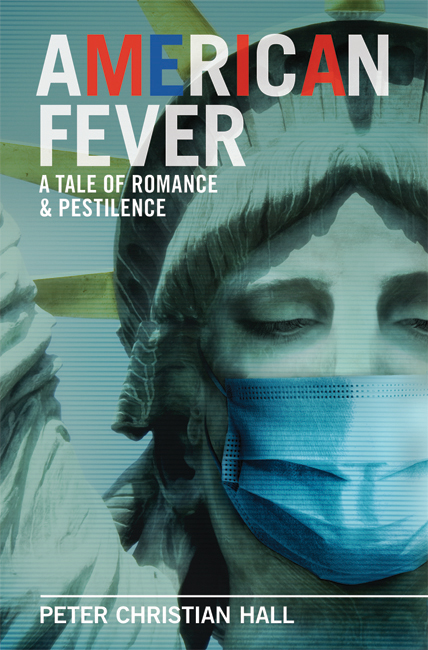Day 43: Vitamin D—A Gorgeous Steroid That Fights Disease
I’m sorry about the last two days. Call it functional difficulties.
Today’s regret is that I’ve never paid tribute to Vitamin D. Being locked up has inspired a greater appreciation of the sun. It’s no surprise that people get depressed in the winter, when the sun is distant and low. It drives me to google….
Which is how I discovered that Vitamin D is a profoundly useful natural hormone, essentially a steroid. (Yup.) The Vitamin D Council maintains an informative site.
 IT'S EVERYWHERE, FREE & GOOD FOR YOUVitamin D boosts your immune system. It’s a biocide that seems to kill bacteria, fungi, and viral particles by stimulating white blood cells to produce more cathelicidin, an antimicrobial compound. Studies show that it fights rickets, osteoporosis, diabetes, breast and bowel cancers, and other cancers.
IT'S EVERYWHERE, FREE & GOOD FOR YOUVitamin D boosts your immune system. It’s a biocide that seems to kill bacteria, fungi, and viral particles by stimulating white blood cells to produce more cathelicidin, an antimicrobial compound. Studies show that it fights rickets, osteoporosis, diabetes, breast and bowel cancers, and other cancers.
Vitamin D is even considered helpful in repressing immune overreactions. It seems to support heart health and fight high blood pressure. Aging, too.
A deficiency of Vitamin D in the womb may contribute to making the unborn child schizophrenic. Just like the presence of flu. It is suspected of causing autism.
Our need for Vitamin D—think of it as a substance that rich sunlight inspires inside us—may even explain the seasonality of influenza. A lot of people lack adequate Vitamin D, particularly in late autumn, winter, and early spring.
In the really old days, we ran around at least half-naked and worked outside when there was light (indoors being a stinky, smoky cave). Even those in temperate climates got plenty of D much of the year. Nowadays people work indoors, overdress, and use sunscreen. We are told to fear any exposure to the sun.
But it’s nearly impossible to obtain enough Vitamin D through diet.
Milk is not the answer, at least not the whole answer. It doesn’t come with D naturally; the dairy industry adds 100 international units to fortify an 8-ounce glass. Studies show that most retail milk fails to contain as much D as the labels claim. When it does, you’d have to drink almost a gallon a day to get what many leading Vitamin D experts consider necessary—up to 2,000 IU daily. (Some recommend 5,000 in the winter.)
Twenty minutes of full-body exposure to the sun in summertime generates 20,000 IU within 48 hours. That’s how much our bodies are geared to handle from nature.
We Come From Fish
Our need for Vitamin D reflects human evolution. We originated in oceans rich in calcium and then crawled onto land that didn’t offer it. Mammals developed Vitamin D to keep blood calcium at levels critical to maintaining heart, brain, and muscle functions without having to dip into the calcium stored in their bones—at least 90% of human calcium is stashed there. (Forget the monkey talk; read Your Inner Fish: A Journey Into the 3.5-Billion-Year History of the Human Body, now available on this site.)
Because Homo sapiens emerged in tropical Africa, where sunlight is plentiful and rich in Vitamin D, we evolved dark protective melanin, pigment to guard against melanoma. Then some of us marched north into Europe and Asia, where our skin bleached to absorb more of the invaluable hormone.
Today most of the world’s economic activity takes place above the 35th parallel in the northern hemisphere, where winter sun isn’t sufficiently intense to keep residents healthy. I could stand naked on a heated Manhattan rooftop through a bright and clear New Year’s Day and derive next to no Vitamin D. In the U.S., the 35th parallel runs from just north of Santa Barbara through Albuquerque and Chattanooga to Cape Hatteras.
All of Europe lies above the 35th. It runs just under Tokyo and most of South Korea, with much of China happily below it (though air pollution blocks much of their D). In the southern hemisphere, far fewer people live on the polar side of the 35th parallel—residents of Melbourne and those who live south of Buenos Aires and Valparaiso.
Black people make very little vitamin D, so those who dwell in the north are thought to suffer more prostate and pancreatic cancer for want of it. Tuberculosis, too.
This applies to all non-whites. In 2007 a University of Toronto study found that 85% of students who had originated in East Asia lacked sufficient D, as did 93% of students from South Asia, and all those of African descent. A Harvard Medical School study said 97% of African Americans and 70% of white Americans are deficient in Vitamin D.
 A GRADUAL SOLAR ECLIPSE AS WE AGEI must point out that I found a study of studies by the National Academy of Science’s Institute of Medicine for the U.S. and Canadian governments. It concluded that few people lack Vitamin D and there’s no need to take supplements. The report ignored most of the best work on the subject. I disagree, respectfully or not. So did these experts at Harvard’s School of Public Health.
A GRADUAL SOLAR ECLIPSE AS WE AGEI must point out that I found a study of studies by the National Academy of Science’s Institute of Medicine for the U.S. and Canadian governments. It concluded that few people lack Vitamin D and there’s no need to take supplements. The report ignored most of the best work on the subject. I disagree, respectfully or not. So did these experts at Harvard’s School of Public Health.
There’s no question that, as we age, our bodies produce less D in response to sunlight. An 80-year-old needs four times as much rich sunlight as a 20-year-old. A black octogenarian needs eight times as much as a young white adult. The arithmetic leaves older folks plundering their bones for calcium, causing osteoporosis.
There’s a certain elasticity of supply if we proceed wisely. (To thwart skin cancer, avoid more than 20 minutes of naked sun between 10 am and 2 pm in the brighter months.) If we achieve sufficient exposure in the sunny months, we store Vitamin D in our body fat and then draw on it.
Tomatoes, Coffee & Exercise Fight Skin Damage
Unless we use too much sunscreen (which may accelerate cancer). Children are so sensitive to Vitamin D that sunscreens won’t prevent them from getting what they need if they circulate under the sun. (Rickets is coming back, so some kids obviously aren’t getting enough D.) But a sunscreen with an SPF of 8 is enough to turn adult Vikings into the equivalent of Black Alaskans—heavily inclined toward D deficiency. To help protect your skin against sun damage, eat tomatoes and exercise and drink coffee. That’s a regimen I could live with, if my gym were open.
In the darker months, people can eat oily, fatty fish like mackerel and sardines, drink fortified milks (including rice milk or soy milk), eat egg yolks and such organ meats as liver, and take vitamin pills. Cod liver oil has some D, but a teaspoonful is worth a mere 400 IU and contains a lot of Vitamin A, which can be very toxic.
Many folks supplement daily with pills containing from 2,000 to 5,000 IU of cholecalciferol (D3). Be careful: One can overdose on D in food and pills.
Have your Vitamin D level tested if for any reason you think you might be deficient or overdosing. Many advocates think everyone should be tested because we all have different absorption rates.
Stay strong: Get naked outside, somehow.



 [American Fever]
[American Fever]